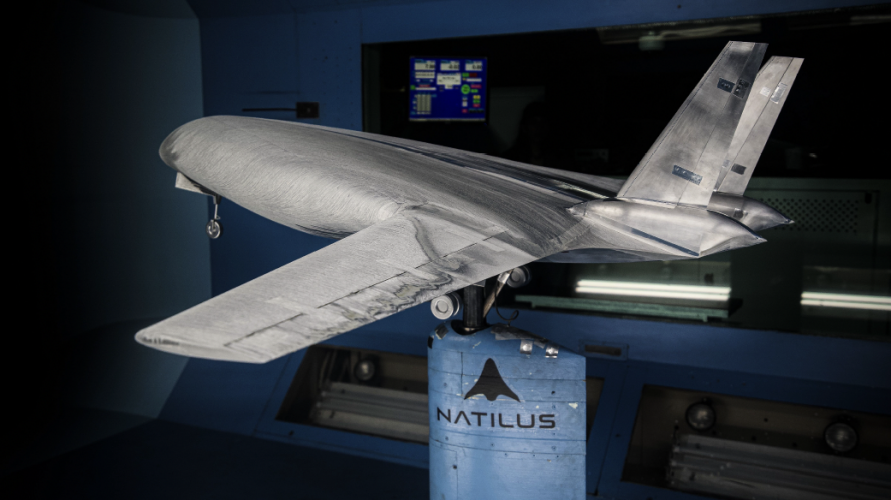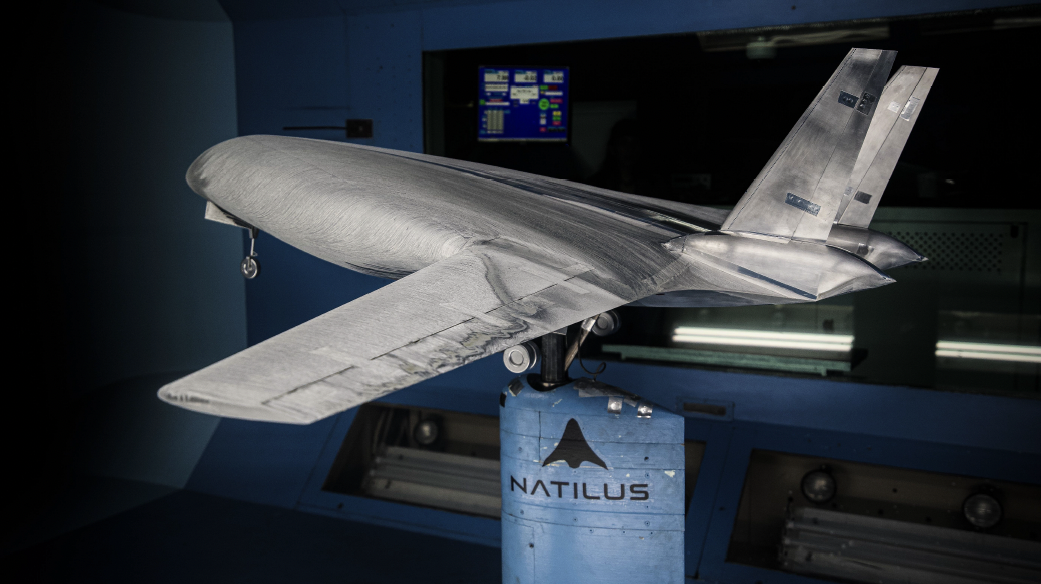- May 2022
Natilus Tunnel Tests Blended Wing Body Uncrewed Regional Feeder
U.S. startup Natilus is conducting wind tunnel tests of the initial regional feeder member of its planned family of blended wing body uncrewed cargo aircraft.
The Natilus 3.8T is a twin turboprop with a payload of 3.8 metric tons and a range of 900 nm at 220 kt.
The blended wing body configuration provides a rectangular main deck cross section and a diamond-shaped cargo bay with 60% more volume than a conventional tube-and-wing freighter of the same weight, co-founder and CEO Aleksey Matyushev says. Cargo aircraft typically “cube out,” reaching their volume constraint before their weight limit, he noted.
Natilus says its uncrewed cargo aircraft will reduce operating costs 60% and emissions 50% compared with conventional freighters. The aircraft is being designed to be flown by a remote pilot from a ground station via dual-redundant satellite communications using Inmarsat and Iridium links.
Designed for flights between regional airports and cargo hubs, the Natilus 3.8T has the same 19,000-lb. takeoff gross weight as the Cessna 408 SkyCourier, which can carry three LD3 containers, but can accommodate seven LD3-45 or 12 modified LD3-New containers, Matyushev said.
A 1/10th-scale model of the Natilus 3.8T has been undergoing testing in the San Diego Wind Tunnel. The tests are intended to validate the stability and performance of the aircraft and provide data development control laws for the autopilot system that will enable the aircraft to the piloted remotely.
While the large, blended wing body airliners studied by Boeing and others pose the challenge of reduced longitudinal and directional stability at transonic speed, Matyushev said the 3.T is a relatively low-speed aircraft and is positively stable longitudinally. Therefore it requires a less complex autopilot.
“It flies exactly like a Beech King Air,” he said. “We have a simulator that is being fed the wind tunnel data [to] prove out that it is easy to fly.” The Natilus 3.8T is being designed for 3,500-ft. takeoff distance.
Natilus has begun building a prototype of the 3.8T, aiming for a first flight from its base at San Diego’s Brown Field Municipal Airport by the end of 2023. The startup is aiming for FAA Part 23 certification in 2025. The prototype will initially be piloted to reduce risk, Matyushev said.
Natilus’ plans to certify the autopilot for remotely piloted operation are based around FAA Advisory Circular 8130.34D. Issued in 2017, this establishes procedures for issuing special airworthiness certificates in the experimental category for uncrewed and optionally piloted aircraft.
“We will certify to the same standards as general aviation for manned aviation, with the caveat of an autopilot certified for autonomy,” he said. “There’s a pathway certification with the FAA, so it’s just a question of how quickly we can get it done.”
Longer-term, Natilus plans to develop a family of uncrewed cargo aircraft including turbofan-powered aircraft with transonic speed and intercontinental range and payloads of 66, 110 and 130 metric tons.
Source: Aviation Week Advanced Air Mobility Report – aviationweek.com/aam
Read the entire article on AviationWeek.com.



